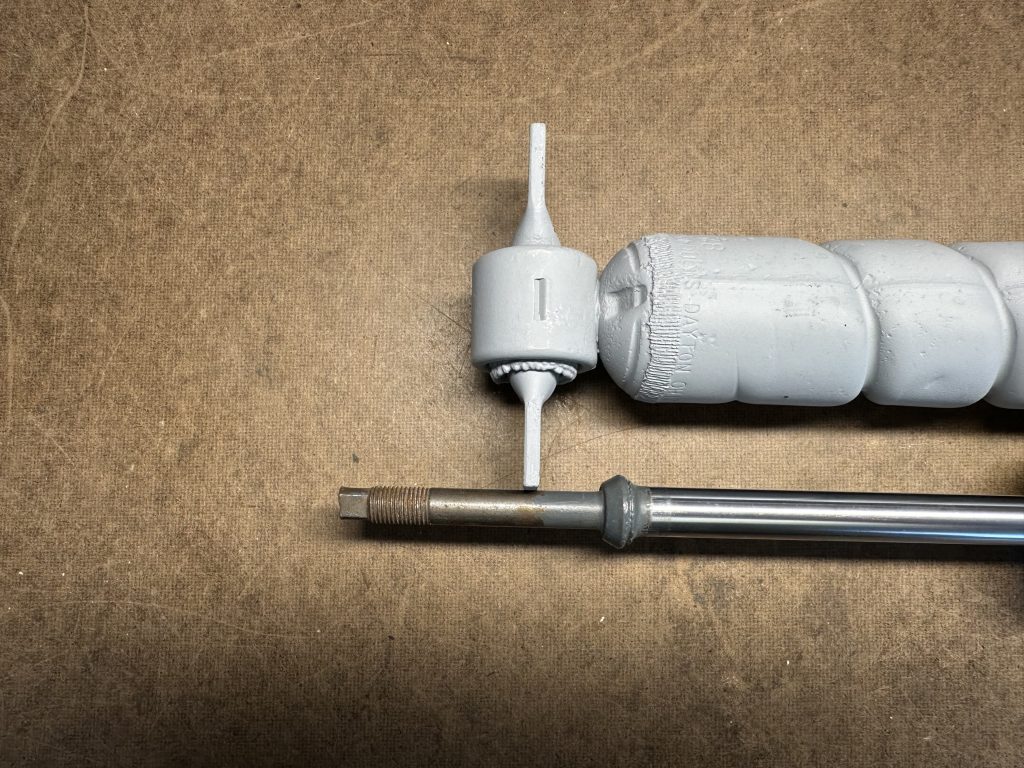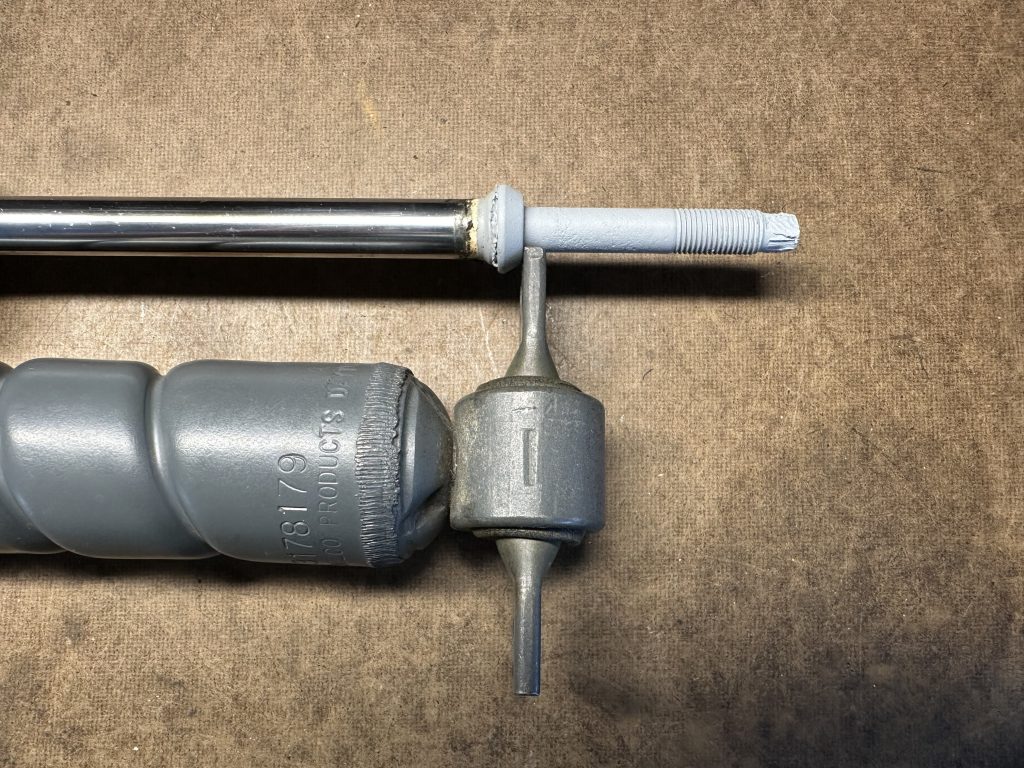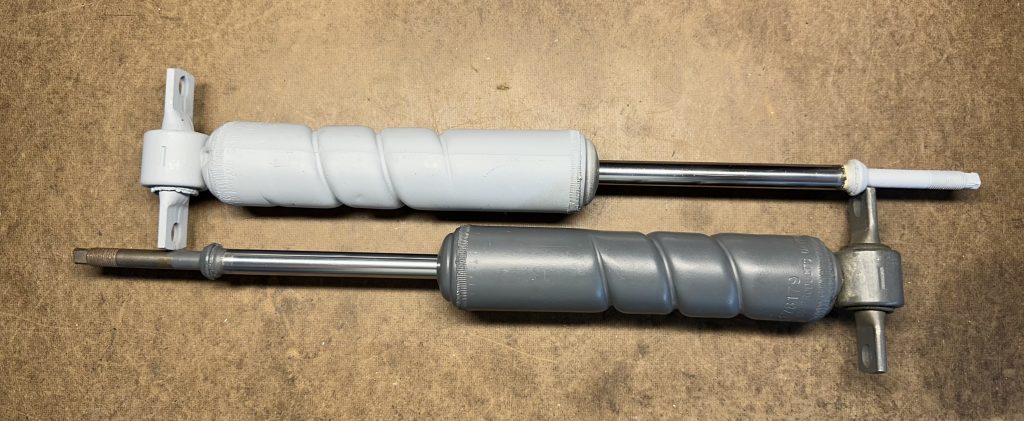I did some research into early Corvair shock absorbers and made a table to summarize my findings.

The part and stamping numbers come from my March 1, 1964 parts book. The Piston travel numbers for all except 1964 rear shock come from GM’s Vehicle Information Kits – we have a page on this website that links to them here.
However, I do not believe the GM Information Kits are completely accurate, because I checked the piston travel for both 1964 front and rear shocks and found that while the measurement stated for the front (4.75”) is correct, the measurement for the rear is wrong. The information kit states the 1964 rear piston travel is 4.75”, same as the front, but it’s actually only about 4”, so that is what I put in my chart for the 1964 rear shock.
But, if we can believe the rest of the information kit measurements, we can answer the question of why the 1963 rear shock has a different number than the 1960-62 rear shock – it has a shorter piston travel. And the different numbers for the other shocks is likely valving to account for different springs in wagons and HD suspensions.
However, it would be best to measure actual vintage shocks to confirm the piston travel numbers for all of the earlier (1960-63) shocks.
Attached photos are for 1964 front and rear factory shocks. The front shock is painted light grey primer, the rear is dark grey. The shocks are fully extended and it is obvious that the rear has a shorter piston travel.



It makes sense that they would’ve changed the 1964 rear shock, given the other changes made to the 1964 rear suspension. We believe the rear shock was shortened to reduce stress on the leaf spring bushings when the control arm is at its lower end of travel.
If we can believe the other numbers from the GM information kits, it seems they also reduced the piston travel in 1963, perhaps to reduce the risk of “tuck-under”?




Bill, First of all, great article about the early shock absorbers!!! Second, I was remembering a tech tip from I believe was Larry Claypool stating the extended length on the early rear shocks was 12.75 inches from the lower shock mount up to the upset portion of the stud. What is the extended length of the 1964 rear shock that is in the photo? Thanks in advance. John Martin
John,
I measured them a bit differently .
Larry’s article in the August 1981 issue of CC said to measure them from the top of the mounting flange to the bottom of the rod stop, but I noticed that the rod stops are not the same thickness on all of the shocks, so I measured from the middle of the flange to the top of the rod stop. The top of the rod stop is where the lower bushing washer seats, so it’s a more accurate location to measure. My lengths will be a little bit longer than what Larry says in his article because I include the length of the rod stop.
Anyway, here’s my collapsed and extended measurements for rear shocks, 1960-64 Corvair, except factory, which is specifically for 1964:
Here are collapsed and extended measurements:
Factory (stamped 3178179) – 1964 only
—collapsed: 8 1/2 “
—extended: 12 1/2” (4” extension)
Pleasurizer (stamped P1068) 1960-64
—collapsed: 8 3/4”
—extended: 12 7/8” (4 1/8” extension)
Gabriel Red Ryder (P9034 BG75 004) 1960-64
—collapsed: 8 5/8”
—extended: 12 7/8” (4 1/4” extension)
So, yeah, the extended length of the factory 1964 rear shock is about 3/8” shorter than the replacement shocks that fit “all” early models.